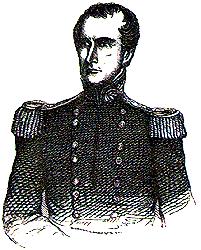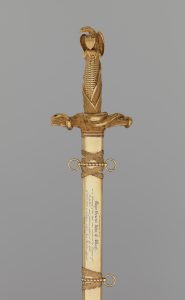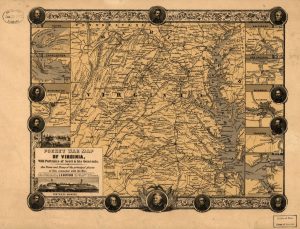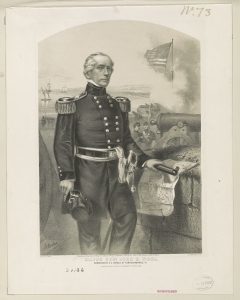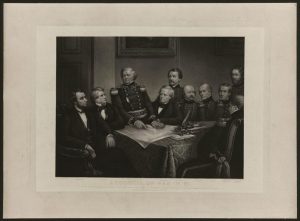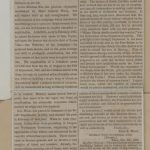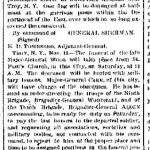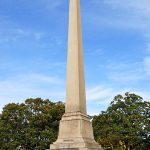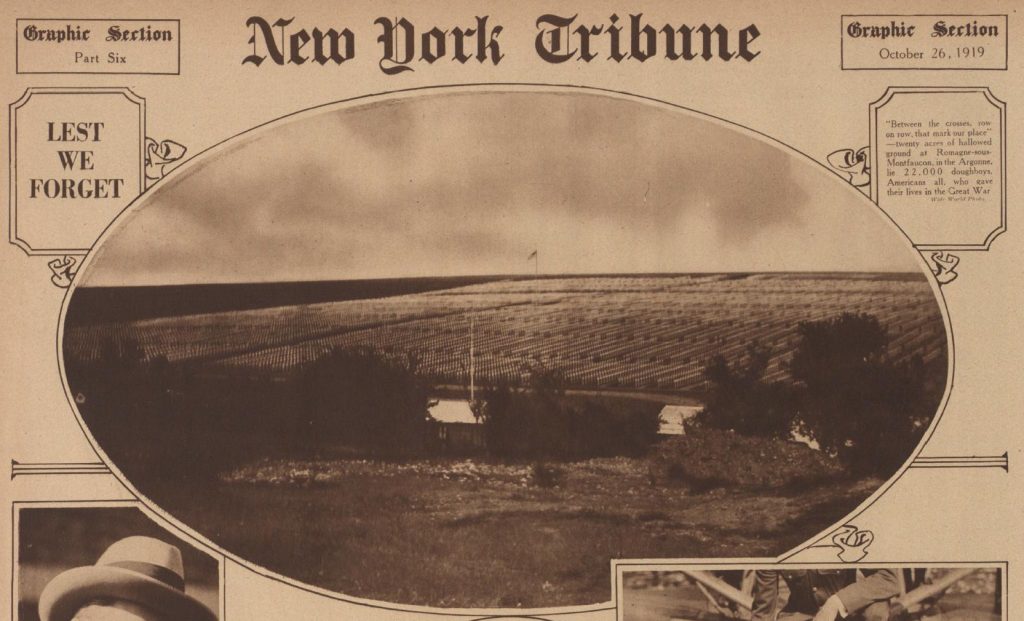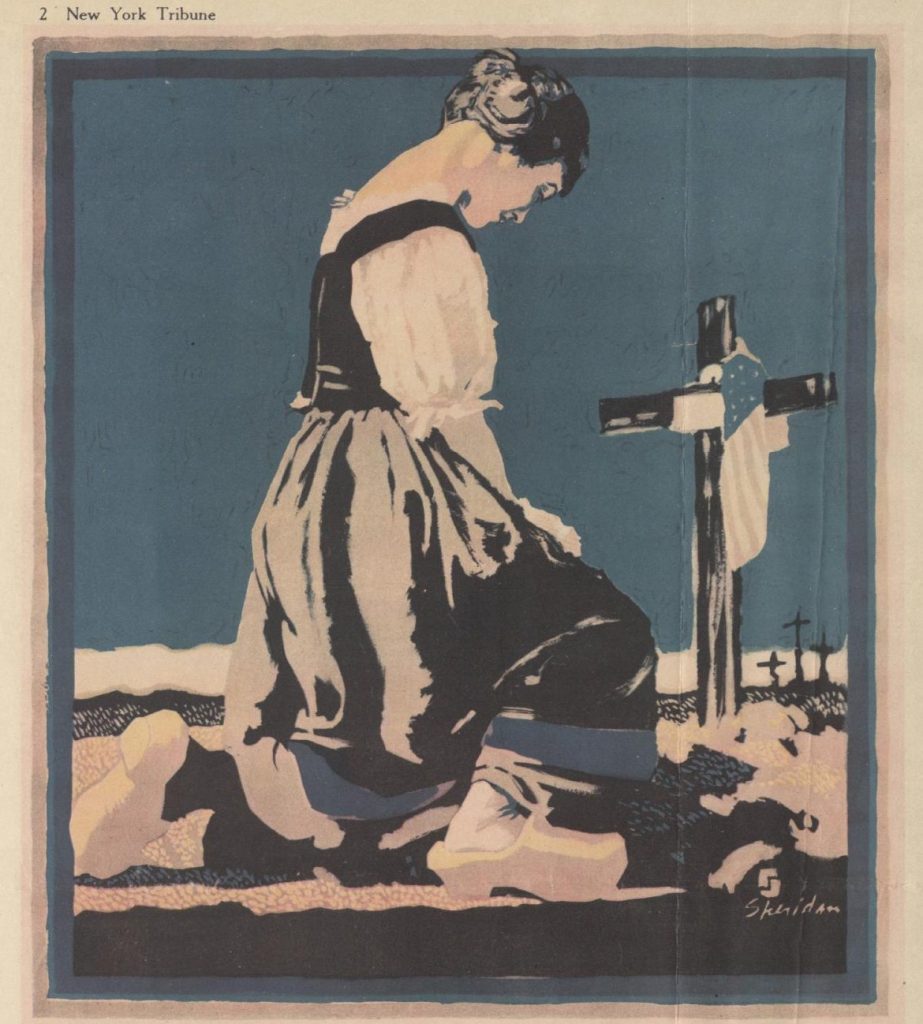John Ellis Wool, 85, died at his home in Troy, New York on November 10, 1869. Major-General Wool was a veteran of three major North American wars. After volunteering for the War of 1812 he made the U.S. Army his career for the rest of his career. He was wounded during the 1812 Battle of Queenston Heights; after recovering he was shot in the thigh. After recovering, John E. Wool was promoted and led the 29th U.S. Infantry with distinction at the 1814 Battle of Plattsburgh. During the Mexican–American War he commanded the Chihuahuan Expedition, which captured Saltillo; later he fought with General Zachary Taylor at the Battle of Buena Vista. “Wool’s leadership was recognized with a Congressional sword, a vote of thanks, and the brevet of major general. After the battle, he commanded the occupation forces of northern Mexico.”
As Wikipedia has also reported: “When the Civil War began in April 1861, Wool had just turned 77 years old, two years older than commander-in-chief of the US Army Winfield Scott. Unlike Scott, who suffered from obesity, gout, and other ailments, Wool was still reasonably fit and could mount a horse.”
He might have been 77, but he had a younger man’s fire. When citizens of Troy visited the general’s home after the rebel assault on and capture of Fort Sumter, he passionately pledged his all for the Union: “My friend, that flag must be lifted up from the dust into which it has been trampled, placed in its proper position and again set floating in triumph to the breeze.”
But according to documentation at the Library of Congress General Wool was involved before Fort Sumter. On January 11, 1861 he wrote to President-Elect Abraham Lincoln vowing to do everything he could to make sure Mr. Lincoln made it safely to Washington, D.C. for his inauguration:
Head Quarters Dept of the East
Troy 11th January 1861
Dear Sir,
Presuming that I am not altogether unknown to you, I take the liberty of transmitting to you two printed letters, which in part indicate my views on the state of the Country. In a few days will be published in the City of New York a letter of mine to the Hon A. B. Olin, a representative in Congress from this City, in which will be found a condensed history of the causes which have induced the State of South Carolina to rebel against the Union. My object in saying this much to you is merely to apprise you that with me the preservation of the Union is paramount to all other considerations; and that I am prepared against all threats to see you safely placed in the Presidential Chair the 4th March next in the city of Washington, that is, if my services as military commander of the Department in such a case be deemed necessary.
To the letters enclosed I have received responses from the States of Maine, New Hampshire, Vermont, Massachusetts, New York, Pennsylvania and Maryland; all expressive of the most elevated patriotism and devotion to country, with a fixed determination to preserve the Union, “peaceably if it can, but forcibly if it must.” Any number of men, and any amount of money, can be had to sustain the union, and that flag, the stars and stripes, which is identified with all that has contributed to our greatness and renown as a nation, but recently trampled under the rebel feet of South Carolina without the slightest cause or justification.
In conclusion, allow me to say that I am no partisan, but a firm, decided and an uncompromising friend of the Union, “the whole Union and nothing but the Union”
considerations of the highest
respect your obt. servt
John E. Wool
P.S. Lest you may not know the part that I have acted in behalf of my country, I send you by mail a pamphlet which may interest you from the fact that several of the Regiments concerned in the [series?] of which t treats, were from Illinois.
W.
Mr. Lincoln responded on January 14th:
Springfield Ill Jany 14th 1861.
My dear Sir:
Many thanks for your patriotic and generous letter of the 11th inst. As to how far the military force of the government may become necessary to the preservation of the Union; and more particularly, how that force can best be directed to the object, I must rely chiefly upon General Scott and yourself. It affords me the profoundest satisfaction to know, that with both of you, judgment and feeling go heartily with your sense of professional and official duty, to the work.
It is true that I have given but little attention to the Military Department of government; but, be assured, I can not be ignorant as to who is Gen: Wool, or what he has done.
With my highest esteem
and gratitude I subscribe
myself
Your Obt. Servt.
A. Lincoln.
During the early days of Civil War General Wool secured Fort Monroe and in May 1862 he ordered the capture of the Norfolk Navy Yard. President Lincoln “personally witnessed the capture of Norfolk and afterwards rewarded Wool by promoting him to a full major general in the regular army thereby becoming only the 23rd man to hold this rank since its creation in 1791.” In July 1863 General Wool commanded a small force that helped contain the New York City draft riots, but on August 1st of that year President Lincoln ordered General Wool’s retirement after 51 years of army service.

